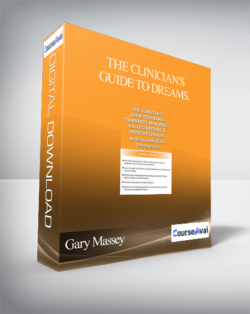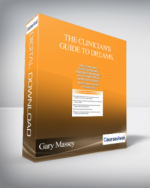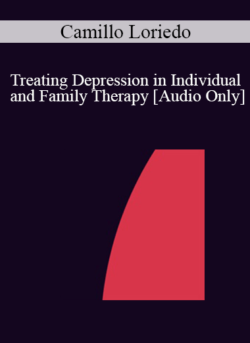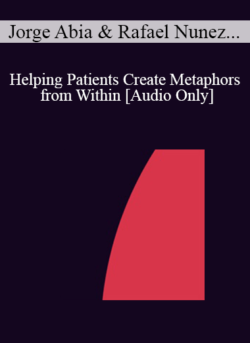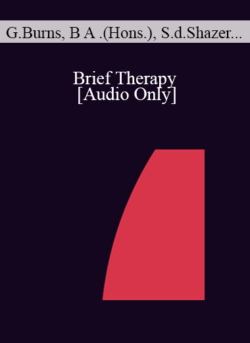Dream work and therapeutic image modification is an often neglected yet valuable inroad and component to healing, wellness, and effective treatment.Purchase The Clinician’s Guide to Dreams. Traumatic Memories. Hallucinations. and Intrusive Images: Making Sense of the Unconscious – Gary Massey courses at here with PRICE $200 $56The Clinician’s Guide to Dreams. Traumatic Memories. Hallucinations. and Intrusive Images: Making Sense of the Unconscious – Gary MasseyReflections and Traces of the UnconsciousDream work and therapeutic image modification is an often neglected yet valuable inroad and component to healing, wellness, and effective treatment. You don’t need a breakdown of the mental health statistics to know that disturbing dreams, PTSD flashbacks, traumatic memories, hallucinations, obsessive fantasies, and unbidden intrusive images frequently impact and contribute to personal decompensation, mood/thought dysregulation, at-risk behavior, and interpersonal disturbance. As mental health practitioners, we must lead the way to properly assess, treat, and intervene as necessary with our patients and at-risk clients; yet many mental health professionals are not fully prepared or thoroughly trained for such crucial tasks.This in-depth course provides the latest research and evidence-based therapeutic tools for effectively intervening with your clients’ dreams, traumatic memories, and unbidden images. Learn innovative and proven therapeutic assessment and intervention methods for effective psychological triage, psychoeducation, and practical daily life coping skills. In conjunction with fine-tuning professional dream work and therapeutic imagery processes and methods needed to meaningfully address and treat your clients, you gain two hours of ethics by examining clinical practice challenges, mistakes, and scenarios. Workshop participants are encouraged to bring their own or a patient’s intriguing dreams or disturbing images for workshop training in more effective dream work and therapeutic imagery processing and integration, while of course maintaining anonymity without specific identifiers.Identify meaningful dream and imagery cues, themes, and components characteristic of child, adolescent, adult, elder, and gender with sensitivity to cultural/ethnic issues and considerationsExplore six theories, innovative approaches, and proven methods of dream work and therapeutic imagery methodsRecognize crucial dream, imagery, and traumatic memory components and dynamics, and relate them to clinical intervention optionsApply effective therapeutic dream work, traumatic memory integration, and imagery approaches and clincial intervention methods relevant to inpatient, outpatient, and educational contextsIncorporate six research-based components of an individual wellness recovery plan into clincial practice utilizing real life problems, images, and scenariosExplore legal and ethical issues, dilemmas, and considerations impacting dream work and therapeutic imagery to ensure quality treatment consistent with state and professional standardsDREAMS, TRAUMATIC MEMORY, DISTURBING IMAGES & BRAIN FUNCTIONINGStages of sleep, brainwaves, and sleep-wake cycleBasic neurobiology and brain functioning during dreaming, traumatic memory, and waking imagery with updated research findingsPsychological models of the human conscious, pre-conscious, personal unconscious, and collective unconsciousGender and cultural/ethnic influences and considerationsRISK ASSESSMENTGuidelines, formats, and methods at critical junctures of treatment and beyondDetermining and identifying precursors, stressors, cues, and triggersTHEORIES & INTERVENTION APPROACHESDream, traumatic memory, hallucinations, and intrusive image dynamicsFreudian, Adlerian, Ericksonian, Jungian, Redecision/TA/Gestalt, Senoi and Creative Problem-Solving theories and approachesIntervention and modification guidelines, methods, and techniquesIndicators of improvement, health, wellness, compensation, decompensation, illness, change, resolution, and realignmentApplication to individual and group psychotherapyEVIDENCE-BASED TREATMENT METHODS & INTERVENTIONSTREATMENT & WELLNESS RECOVERY PLANSAddressing sleep disturbance and disordersCollaborative development and implementationPrecursors and triggersCues and warning signsPractical coping skillsPatient-family educationNecessary support person(s) involvement/debriefingSocial resource enhancementETHICAL DILEMMASPractical contextual guidelinesEthical challengesGroup case studies exploring pivotal treatment junctures, risk indicators, intervention options, recommendations, and follow-upPurchase The Clinician’s Guide to Dreams. Traumatic Memories. Hallucinations. and Intrusive Images: Making Sense of the Unconscious – Gary Massey courses at here with PRICE $200 $56
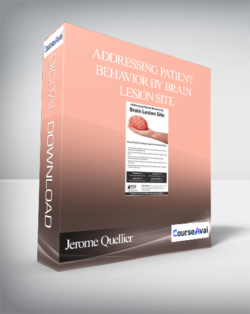 Addressing Patient Behavior by Brain Lesion Site: Clinical Tools & Strategies Specific to Patient Deficits – Jerome Quellier
₹9,296.00
Addressing Patient Behavior by Brain Lesion Site: Clinical Tools & Strategies Specific to Patient Deficits – Jerome Quellier
₹9,296.00
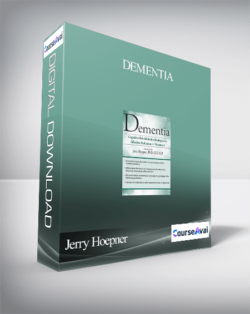 Dementia: Cognitive Rehabilitation Strategies for Effective Evaluation & Treatment – Jerry Hoepner
₹9,296.00
Dementia: Cognitive Rehabilitation Strategies for Effective Evaluation & Treatment – Jerry Hoepner
₹9,296.00
The Clinician’s Guide to Dreams. Traumatic Memories. Hallucinations. and Intrusive Images: Making Sense of the Unconscious – Gary Massey
₹9,296.00

